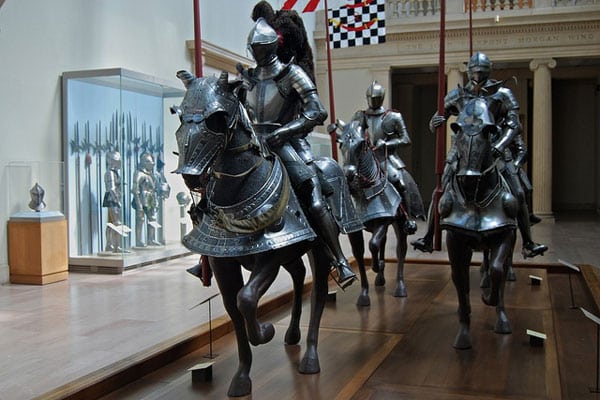
April 10, 2018; New York Times
The Metropolitan Museum of Art in New York has announced that Max Hollein will become its 10th director when he takes office this August.
Their choice signals a determination to keep up in the competitive environment that currently encompasses New York’s fine arts scene. The Met has faced several years of budget problems and currently has a $10 million deficit on its $305 million budget. Hollein, however, has a track record of innovative installations, successful fundraising, and record attendance levels at his prior institutions. The New York Times described him as an “aggressive fundraiser” with a track record of “digital innovation.” The German site Deutsche Welle described him as “one of Germany’s most inventive curators,” “known for connecting money and art like no one else.” ArtNet reporter Julia Halperin said, “He is a well-liked administrator known for his digital savvy, his diplomacy, and his rare ability to speak fluently about Old Masters and contemporary art alike.”
Hollein is the first director in over 60 years to come from the outside, rather than rising through the Museum’s curatorial ranks. The Met is known to have powerful curators, another management challenge that Hollein will face.
Sign up for our free newsletters
Subscribe to NPQ's newsletters to have our top stories delivered directly to your inbox.
By signing up, you agree to our privacy policy and terms of use, and to receive messages from NPQ and our partners.
After a yearlong search to replace prior director Thomas Campbell, who resigned amid budgetary woes and whiffs of office scandal, the museum’s new direction extends to the position Hollein will hold. Unlike prior directors at the Met, Hollein will report to Dan Weiss, the museum’s president and chief executive.
By all reports, Weiss is an amiable and capable president. He came to the Met in 2015 from academia, an art history professor who’d risen to be president of Haverford College. He told the New York Times last year, “I am not territorial, and I don’t need to be the center of institutional attention. I want somebody who can fully inhabit this role with my support.” Keith Christiansen, the chairman of the Met’s European paintings department, described Weiss as “a person I feel I can count on for listening and responding and taking action on curatorial concerns.” Hollein and Weiss have in common that they came from organizations with budgets many magnitudes smaller than the Met’s. Weiss will manage operational concerns, and Hollein will be responsible for acquisition, conservation, and curation. Weiss says he thinks that a director would likely be relieved not to worry about things like security and payroll.
Hollein has extensive experience leading arts institutions, including three institutions in Frankfurt, the Austrian pavilion at the Venice Art Biennale in 2005, and most recently, the Fine Arts Museums in San Francisco. We have visited the Fine Arts Museums before; in 2015, CEO Dede Wilsey faced scrutiny for an unsanctioned payment of almost half a million dollars to a retired staff member. NPQ noted at the time that Wilsey, a prolific fundraiser who was also CEO and president of the board, might have too much concentrated power. Of Hollein’s departure, she said that she was “sad to see Max leave,” and wished that her organization could “benefit much longer from his strong and visionary leadership.”
Hollein has a track record of working to diversify museums’ representations of art, including acquiring a large body of work by contemporary Black artists and staging an exhibit on contemporary Muslim fashion. However, several people have expressed disappointment that the Met did not take the opportunity to recruit a director who would personally represent a commitment to more inclusive leadership. According to the Wall Street Journal, “Nik Honeysett, the J. Paul Getty Museum’s former head of administration, said he wished the Met had broken precedent by hiring a woman to be its next director.” NPQ has reported on both the stunning lack of diversity among museums’ curatorial leadership and efforts to address it by cultivating a group of up-and-coming leaders.—Erin Rubin













